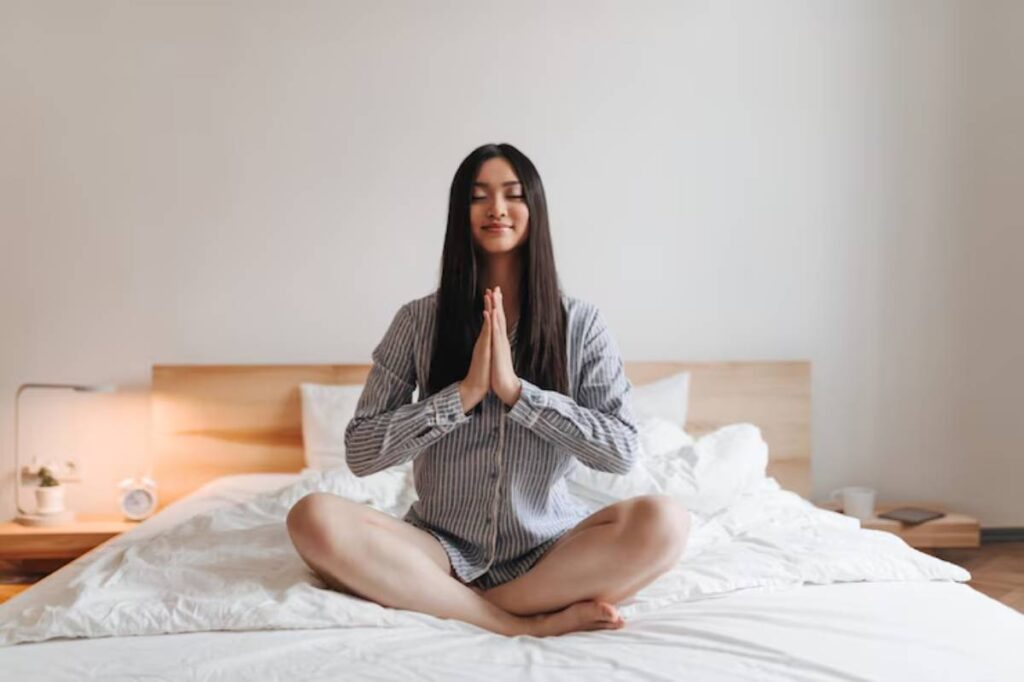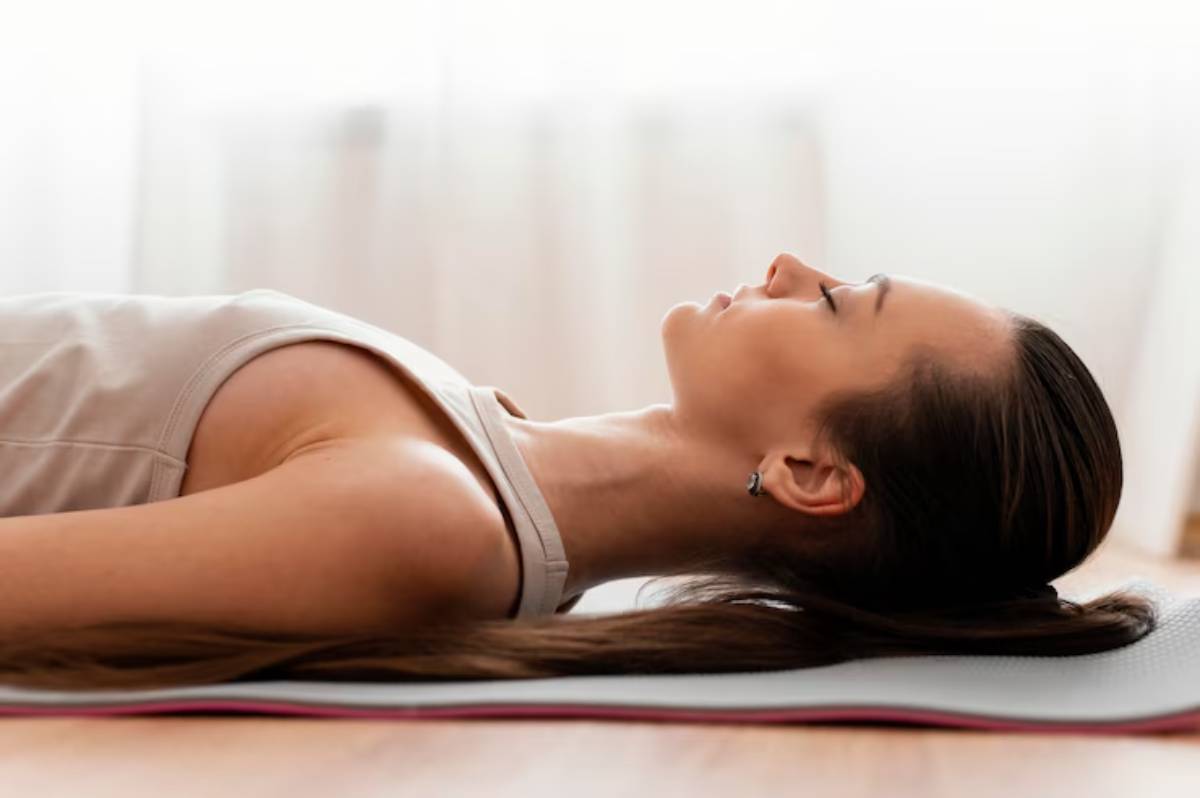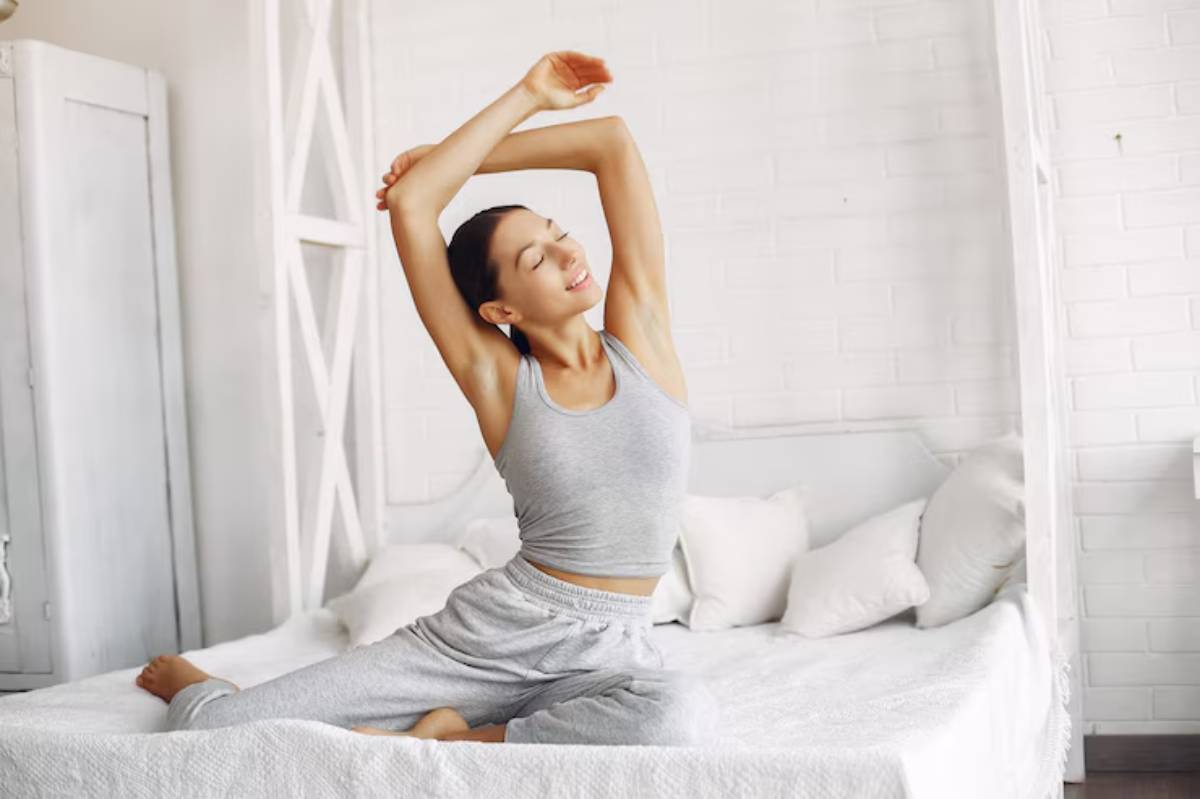The Health Blog

How to Practice Mindfulness Meditation Before Bed
Do you ever find yourself lying in bed with a racing mind, unable to switch off? You’re not alone. Many people struggle to let go of thoughts, worries, or to-do lists at night.
The good news is that mindfulness meditation offers a simple, natural way to calm your mind and body before sleep. This guide will help you explore mindfulness meditation sleep routines, learn effective relaxation techniques, and discover a path to peaceful sleep improvement.
Pro Tip: You don’t need any special equipment or training. Just bring yourself, your breath, and a few quiet moments.
Quick Guide: Why Mindfulness Meditation Helps Sleep

- Lowers heart rate and blood pressure
- Reduces stress and anxiety
- Slows racing thoughts
- Relaxes muscles and calms the nervous system
- Creates a positive bedtime habit
Important: Mindfulness meditation works best when practised regularly—not just when you can’t sleep.
Step-by-Step: How to Practise Mindfulness Meditation Before Bed

Step 1: Prepare Your Space
A calm environment makes it easier to relax.
| Tip | Why It Helps |
| Dim the lights | Signals to your body it’s time to rest |
| Remove clutter | Reduces mental distractions |
| Play soft music or white noise | Creates a soothing atmosphere |
| Turn off screens | Blue light interferes with melatonin production |
Quick Tip: Even small touches like a soft blanket or a scented candle (lavender works well) can enhance your bedtime space.
Step 2: Get Comfortable
You don’t need to sit cross-legged or on the floor. Comfort is key.
- Sit in a supportive chair or lie flat on your bed
- Keep your spine relaxed yet straight
- Rest your hands loosely on your lap or at your sides
- Close your eyes if it feels comfortable
Pro Tip: If lying down makes you sleepy before finishing your meditation, try a seated position.
Step 3: Focus on Your Breath
Breath awareness is the foundation of mindfulness.
- Inhale slowly through your nose for 4 counts
- Hold your breath gently for 1–2 counts
- Exhale slowly through your mouth for 5–6 counts
- Repeat at a steady, natural pace
Quick Tip: If your mind wanders (and it will), simply notice it and return gently to your breath.
Step 4: Practise a Simple Mindfulness Meditation
Here’s a basic routine you can follow:
- Start with 1–2 minutes of deep breathing
- Scan your body from head to toe
- Notice any tension
- Allow tight areas to soften
- Focus on your breath or use a mantra
- Example: Repeat silently, “Inhale calm, exhale stress.”
- Gently observe thoughts without judgement
- Let them come and go like clouds
- Finish by returning your focus to the room
- Open your eyes slowly
Sustainability Note: You only need 5–10 minutes to feel benefits. Consistency matters more than length.
Step 5: Try Guided Meditation (Optional)
Apps and recordings can help, especially for beginners.
Popular mindfulness meditation apps:
| App | Features |
| Calm | Guided sleep meditations, nature sounds |
| Headspace | Simple mindfulness courses |
| Insight Timer | Free library of guided meditations |
| Balance | Personalised daily meditations |
Pro Tip: Choose calming voices and avoid overly stimulating background music.
Extra Relaxation Techniques to Pair With Meditation

| Technique | Benefit |
| Progressive muscle relaxation | Releases built-up tension |
| Visualisation (e.g. imagining a beach) | Distracts from anxious thoughts |
| Gentle stretching or yoga | Loosens tight muscles |
| Journalling worries | Clears your mind before bed |
Quick Tip: Combine a short mindfulness practice with one of these methods to boost effectiveness.
Signs You’re Benefiting From Mindfulness Meditation
You may notice:
- Falling asleep faster
- Waking up less often during the night
- Feeling calmer at bedtime
- Reduced anxiety or worry habits
- Improved mood and energy the next day
Important: Results build over time. Stick with it even if change feels slow at first.
Common Mistakes to Avoid
| Mistake | Better Approach |
| Forcing yourself to “empty your mind” | Let thoughts come and go naturally |
| Expecting instant sleep | View meditation as preparation, not a sleep button |
| Judging yourself for drifting thoughts | Simply return to your breath |
| Using stimulating apps or content | Choose calming voices and sounds |
| Practising only when anxious | Make it a nightly habit for best results |
Frequently Asked Questions
How long should I meditate before bed?
Start with 5–10 minutes. You can gradually increase as you feel comfortable.
Is mindfulness meditation the same as sleep hypnosis?
No. Meditation focuses on awareness and breath. Hypnosis uses suggestion techniques. Both can help sleep in different ways.
Can children or teens try mindfulness meditation?
Yes. Many apps offer child-friendly versions. Keep sessions short and gentle.
Do I need to sit a certain way?
No. Comfort matters more than posture. Just avoid positions that cause discomfort or strain.
What if I fall asleep during meditation?
That’s okay! It means you’re deeply relaxed. Over time, you may find a balance between relaxation and awareness.
Calm Your Mind, Improve Your Sleep
Mindfulness meditation offers a simple, safe, and natural way to prepare your body and mind for restful sleep.
By practising mindfulness meditation sleep routines, combining it with other relaxation techniques, and making it part of your nightly habit, you can experience long-term sleep improvement.
Start small. Breathe deeply. Let your thoughts drift by like passing clouds. Your journey to better sleep begins now.
Be mindful. Be calm. Rest well.









